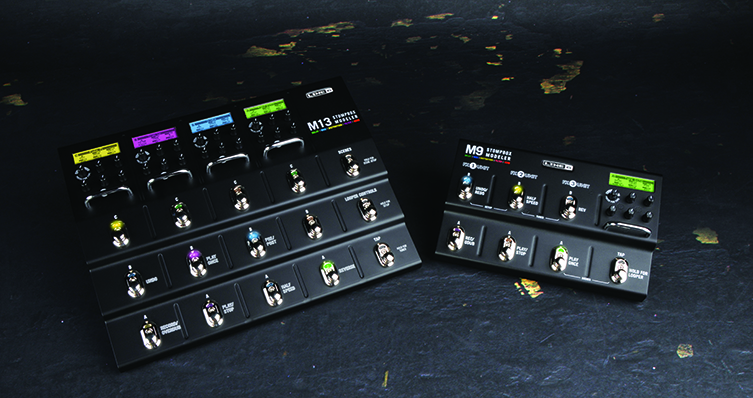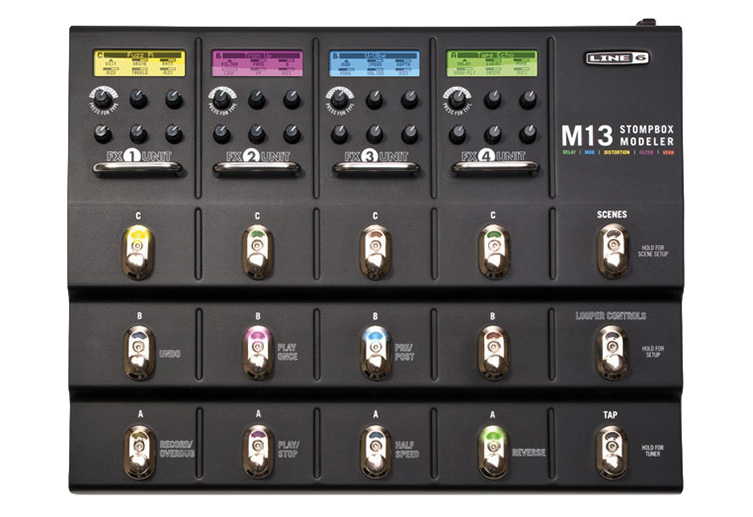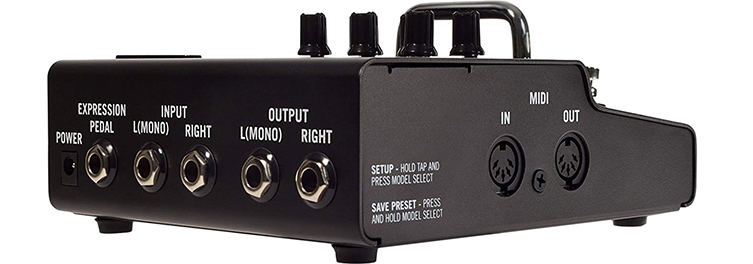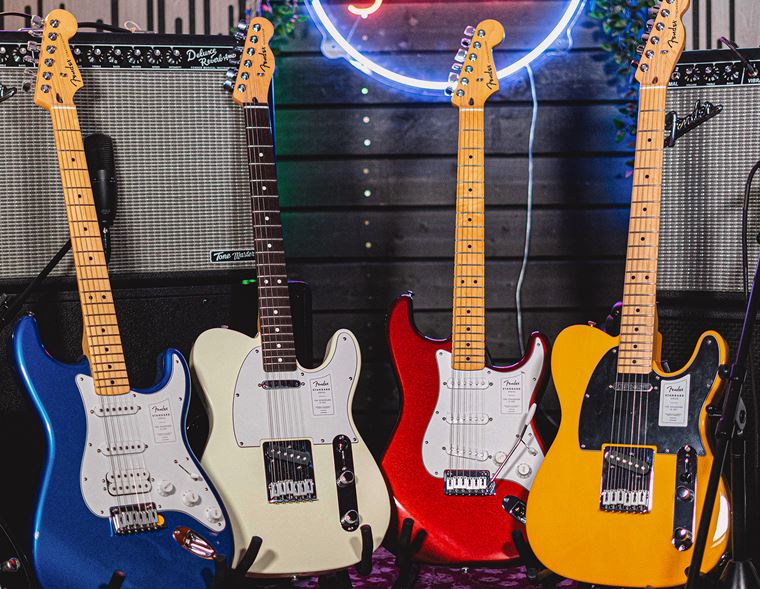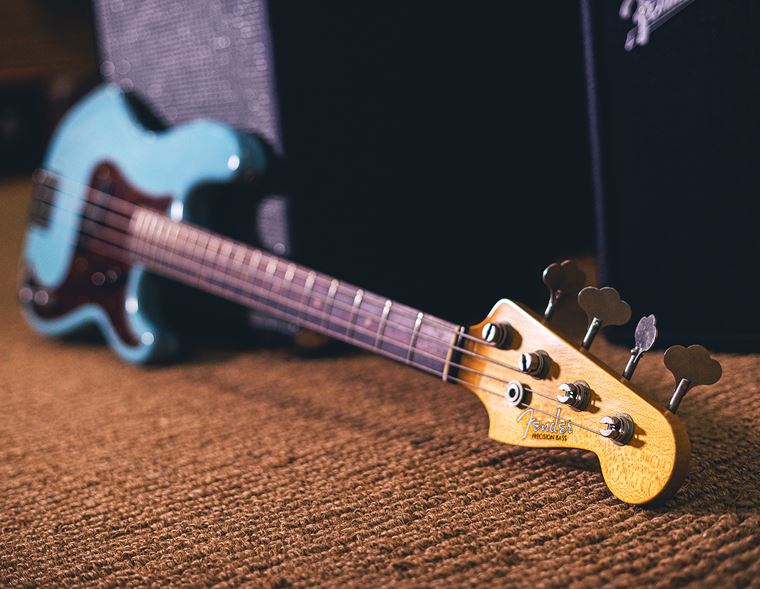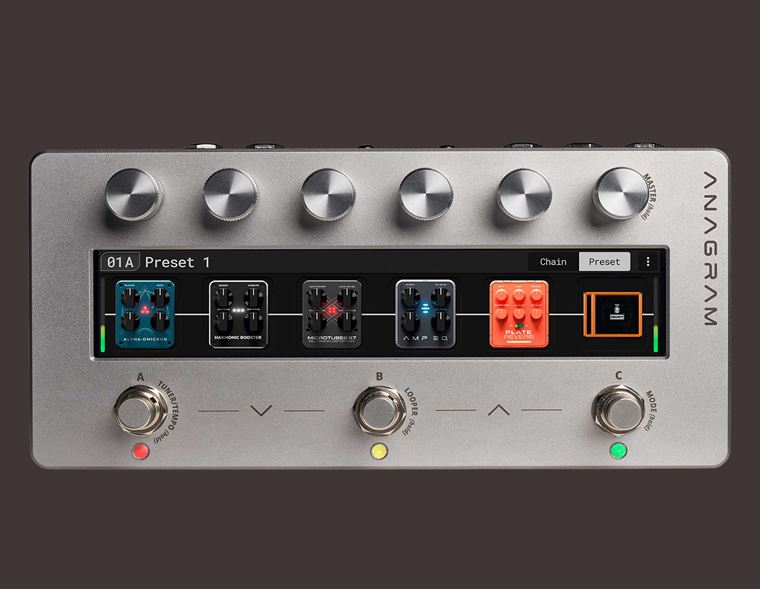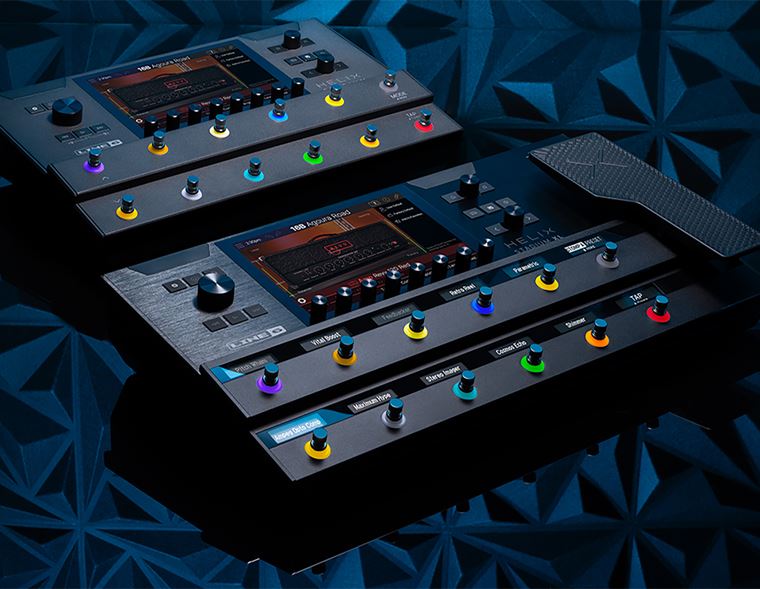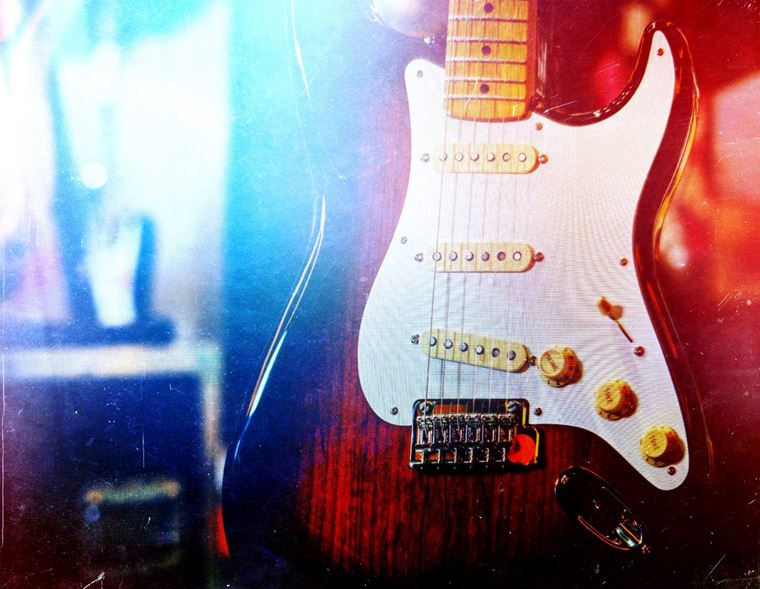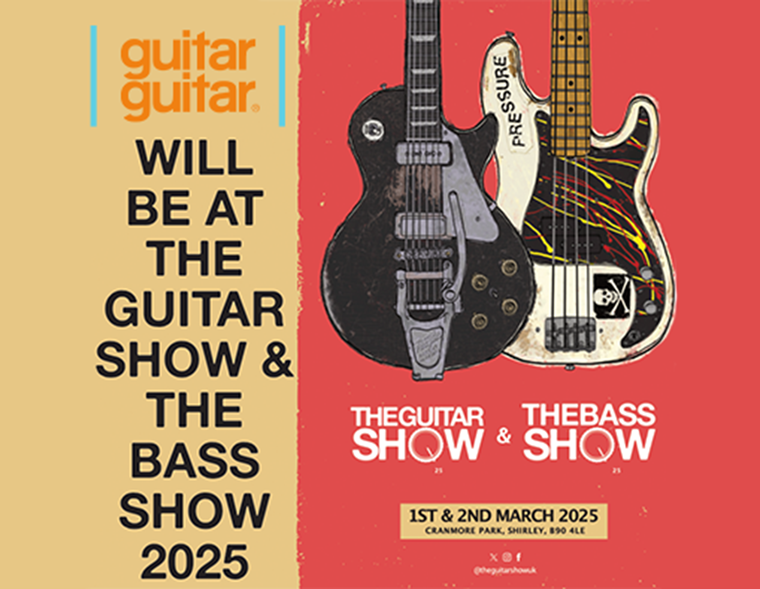A Closer Look: Line 6 M Series Stompbox Modellers
Amps or Digital.
That seems to be the main question right now, with guitarists, anyway.
It seems that the two accepted ways are to use an amplifier and feed it with a string of analog pedals, or to do away with the amp altogether and opt for something entirely digital, like a Kemper or a Helix.
But there is a third way...
Line 6’s M Series stompbox modellers are a legitimate and viable option for amp-fans who want a ton of sounds together with a stompbox mentality.
There is no amp modelling here. You do not have to concern yourself with ‘impulse responses’ or ‘full range flat response’ speakers. All you need to do is grab your favourite guitar, your favourite amp, and bang one of these M-series units in between. There are three models - the M13, M9 and M5 - and each holds the same sounds, and similar functionality, depending on the size.
The idea with the M-Series units is that you already have an amp that you love, and have no intentions of replacing it with technology. You also know about effects, and want to have only the greatest examples available to you, to use in the traditional way. These units give you a cupboard full of the greatest stompboxes in history, to use in your rig with your guitar amp. They allow you to cut down on batteries, power supplies and patch cables, whilst also bringing some very useful features like a fantastic looper, and some additional concepts like the ability to have numerous iterations of the same pedal running at once. Really, there’s a lot to benefit you, regardless of how and why you use effects. Let’s take a closer look...
Top Drawer Effects
The M-Series effects are the sounds that Line 6 built their reputation on. You know that big green delay pedal, the DL-4? That’s exactly what we’re talking about here. There was a whole family of them – which included dedicated units for distortion (yellow), modulation (blue), filter/synth effects (purple) and also the Verbzilla reverb modeller, which was housed in a different enclosure.
Each of these units modelled specific, existing pedals, and the results were uncanny. Players who A/B tested the modelled sounds against their inspirations found them to be so accurate that they could effectively do away with their single pedals. Famous pedals from throughout guitar history were included, making each modeller something of a steal.
After a while, it became clear that a new way to present these world-class sounds were needed. Some players wanted all of the Line 6 pedals on their board, and things were getting a bit ridiculous, size-size. The M-13 was the response, followed by its smaller siblings the M9 and M5.
Flexibility
The effects are colour-coded to match the modeller pedals they come from on both the display screen and each individual pedal. For example, if you’ve selected a delay effect, the screen turns green, as does the LED on whichever footswitch you’ve selected. In the case of the M13, there are 12 switches for effects, and you can populate them however you like. One effect from each vertical unit or ‘column’ is available at a time, so the screen at the top will change colour and data to correspond with the pedal you lasted stepped on from that column of three (pedal A, B or C in each column). It’s much easier in practice than in explanation, but in general terms it means that you can have 4 effects on at once, (3 with the M9 and 1 with the M5) from 12 possible locations (6 on the M9), and from over 100 available sounds.
So, yes, it is quite possible to dial up 12 variations of, say, distortion and fuzz, and stick on a combination of 4 on at once! That was one of the first things we did, and the results are of course insane but we needed to know! And yes, you can now find out what four flangers sound like, all at once! Is it good? Not really, it just sounds like one slightly wonky flanger, but you can certainly experiment!
We’re being facetious, but the point we’re making is how flexible the unit is. If, for example, you are a U2 nut, you can look up the delay times for 12 of your favourite U2 songs and then dial them all in, ready to be used in those moments when you lose it and go Edge-daft. This ‘pedalboard’ can be saved to a memory location and later recalled. Used sensibly, the quality of each effect shines through marvellously. We were quickly able to 'build' a few pedalboards of our favourite players, and were suitably gobsmacked at the sonic similarity of the tones, if not the playing...
This pedalboard idea means you can save a pedalboard for your Blues jam (lots of Hendrix-style fuzz and Univibe etc) and then have an entirely different ‘board’ saved for your Classic Rock, Metal, Shoegaze, Whatever genres, too. The whole concept takes about two seconds to get used to, and then it clicks pretty quickly. It’s a great idea, and, of course, the M13 offers the most potential due to its number of pedal locations.
The M5 is somewhat different, in that everything is distilled to a single effect at one. We think of this more as a ‘secret weapon’ to have on your pedal board. It’s the one pedal you need for any given sound that you maybe only need to use once in a set and can’t quite justify having as a dedicated pedal. Perhaps you have one moment in a song that needs a Ring Modulator, an Auto-Wah or a Harmoniser, and you don’t touch that sound again afterwards? The Line 6 M5 gives you the power to have those 'Special FX' sounds handy on your board for oyu to employ when you need them, changing them out again for anything else straight after! It’s any of 100 different pedals, whenever you need that sound! Remember, it’s also a tuner so that alone makes it a very clever buy! Replace your tuner with this and gain a ton of top-grade effects to boot!
Tougher Than Arnie
The three units all share the same construction. Apart from the small selection knobs under the unit’s screen(s), everything here is built from seriously tough metal. We’re talking the entire chassis, the footswitches, the protective bars that prevent your boot from damaging said selection knobs...these things feel like they’ve fallen off the back of an army truck! The Line 6 M Series units are designed to be part of a professional touring setup, so are built to with stand all kinds of on-the-road calamity.
Great Connections
It’s all about who you know, and the Line 6 M Series pedalboard are seriously well-connected! The largest M13 model has two instrument inputs, stereo outs, a stereo FX loop, MIDI in/out AND two inputs for expression pedals! These options seriously open up the unit to adventurous and ambitious musicians! Nearly all of the effects on board can take advantage of expression pedal manipulation, from obvious volume, wah and pitch effects to more subtle uses like controlling modulation speed or delay repeats. For the creative guitarist, the palette is wide open and full of colours!
The single-stomper M5 (okay, double-stomper, since there’s a footswitch for tempo/tuner functions too) keeps the stereo ins and outs, keep the MIDI and still allows the connection of a single expression pedal. In a small, compact chassis, that’s some achievement!
Looping Frenzy
The M13 has one of the most effective and intuitive loopers we’ve seen yet. Move into looping mode and the footswitches all take on new functions: alongside the usual record/overdub, play and stop controls, Line 6 give you ½ speed, reverse and play-once controls for some seriously advanced looping. Also, and this is a pretty big plus, you can go in and out of looper mode whilst a loop is running, meaning you can, say, create a loop with a clean guitar sound, have it playing back, and then go in and select a different tone – maybe a distortion with a phaser or whatever – and go back in to looping mode again to record a lead over the top of your original loop! Seamlessly! Think of the possibilities!
Final Thoughts
If you like to use even three or four effects when you play, then we highly expect you to love the M13. There is just so much to enjoy, and the sound quality is as good as the original vintage stompboxes. We think Line 6 have covered the correct bases in terms of both the choice of pedals and implementation of the concept to make the units very intuitive, usable and satisfying.
The M5 plays a slightly different game. This is essentially like the blank tile in a game of Scrabble (the one that can be any letter you choose it to be): you have it on your existing pedal board, and simply select it’s nature and purpose as it relates to the song or sound you need it for. We honestly can’t think of a guitarist out there who couldn’t make great practical use of this little guy. Whether it’s primarily a gain pedal for you, or an extra delay, or the hundred other things it does, it certainly pays its rent in terms of pedalboard real estate!
Think about your setup, and what a Line 6 M Series unit could do for it. We think you’ll be smiling pretty soon.
Thanks for reading
Ray
Click to See our Line 6 M Series Stompbox Modellers

